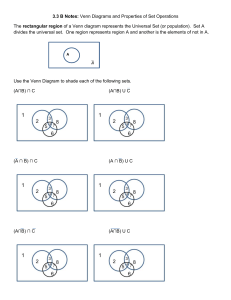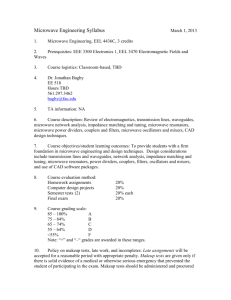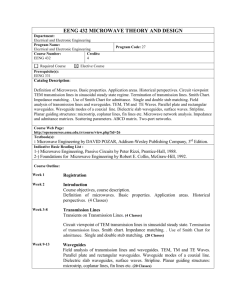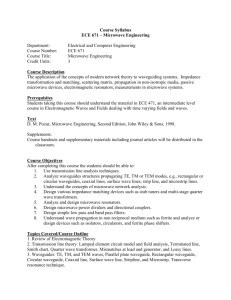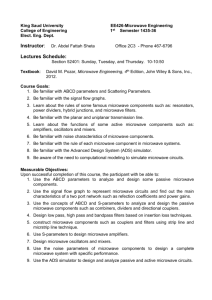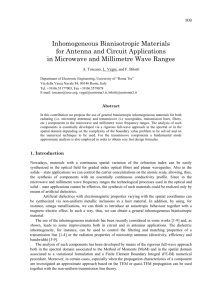EE436_ECG633 - Microwave Theory - Department of Electrical and
advertisement
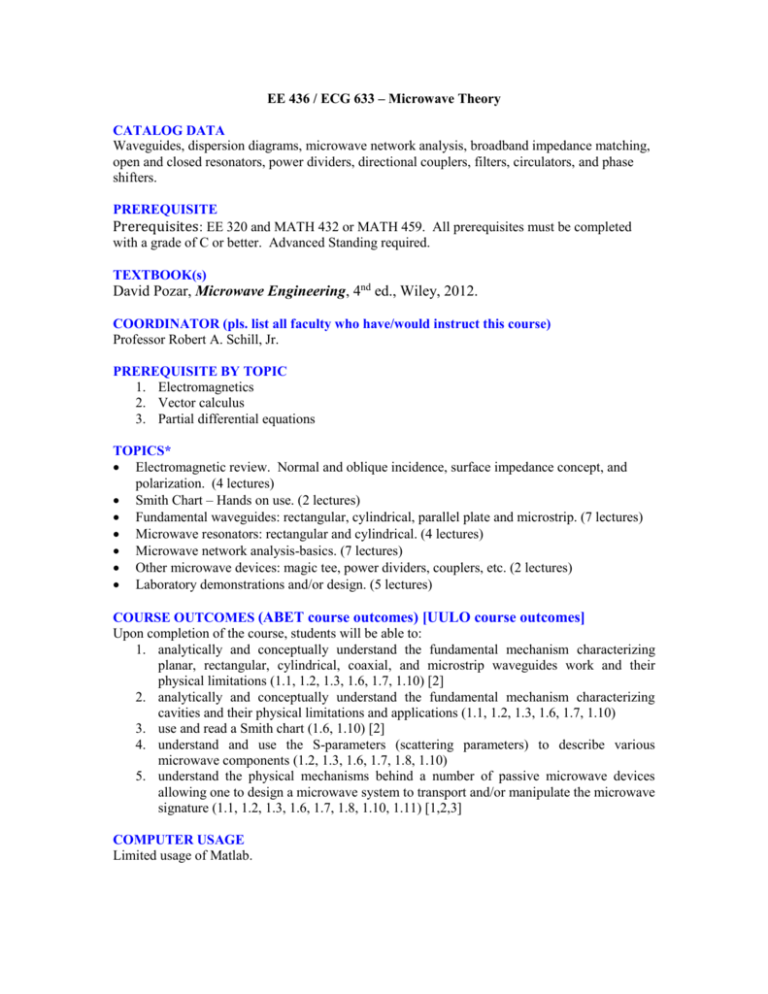
EE 436 / ECG 633 – Microwave Theory CATALOG DATA Waveguides, dispersion diagrams, microwave network analysis, broadband impedance matching, open and closed resonators, power dividers, directional couplers, filters, circulators, and phase shifters. PREREQUISITE Prerequisites: EE 320 and MATH 432 or MATH 459. All prerequisites must be completed with a grade of C or better. Advanced Standing required. TEXTBOOK(s) David Pozar, Microwave Engineering, 4nd ed., Wiley, 2012. COORDINATOR (pls. list all faculty who have/would instruct this course) Professor Robert A. Schill, Jr. PREREQUISITE BY TOPIC 1. Electromagnetics 2. Vector calculus 3. Partial differential equations TOPICS* Electromagnetic review. Normal and oblique incidence, surface impedance concept, and polarization. (4 lectures) Smith Chart – Hands on use. (2 lectures) Fundamental waveguides: rectangular, cylindrical, parallel plate and microstrip. (7 lectures) Microwave resonators: rectangular and cylindrical. (4 lectures) Microwave network analysis-basics. (7 lectures) Other microwave devices: magic tee, power dividers, couplers, etc. (2 lectures) Laboratory demonstrations and/or design. (5 lectures) COURSE OUTCOMES (ABET course outcomes) [UULO course outcomes] Upon completion of the course, students will be able to: 1. analytically and conceptually understand the fundamental mechanism characterizing planar, rectangular, cylindrical, coaxial, and microstrip waveguides work and their physical limitations (1.1, 1.2, 1.3, 1.6, 1.7, 1.10) [2] 2. analytically and conceptually understand the fundamental mechanism characterizing cavities and their physical limitations and applications (1.1, 1.2, 1.3, 1.6, 1.7, 1.10) 3. use and read a Smith chart (1.6, 1.10) [2] 4. understand and use the S-parameters (scattering parameters) to describe various microwave components (1.2, 1.3, 1.6, 1.7, 1.8, 1.10) 5. understand the physical mechanisms behind a number of passive microwave devices allowing one to design a microwave system to transport and/or manipulate the microwave signature (1.1, 1.2, 1.3, 1.6, 1.7, 1.8, 1.10, 1.11) [1,2,3] COMPUTER USAGE Limited usage of Matlab. GRADING Homework assigned weekly; One midterm; One final exam; Hands-on design project (s). ABET COURSE OUTCOMES 1. The appropriate technical knowledge and skills 1.1. An ability to apply mathematics through differential and integral calculus, 1.2. An ability to apply advanced mathematics such as differential equations, linear algebra, complex variables and discrete mathematics, 1.3. An ability to apply knowledge of basic sciences, 1.4. An ability to apply knowledge of computer science 1.5. An ability to apply knowledge of probability and statistics, 1.6. An ability to apply knowledge of engineering 1.7. An ability to design a system, component, or process to meet desired needs within realistic constraints 1.8. An ability to identify, formulate, and solve engineering problems 1.9. An ability to analyze and design complex electrical and electronic devices 1.10. An ability to use the techniques, skills, and modern engineering tools necessary for engineering practice. 1.11. An ability to design and conduct experiments, as well as to analyze and interpret data 2. The appropriate interpersonal skills 2.1. An ability to communicate effectively 2.2. An ability to function on multidisciplinary teams 3. The knowledge and skills to be responsible citizens 3.1. An understanding of professional and ethical responsibility 3.2. The broad education necessary to understand the impact of engineering solutions in a global, economic, environmental, and societal context 3.3. A recognition of the need for, and an ability to engage in life-long learning 3.4. A knowledge of contemporary issues 3.5. A knowledge of the basic content and concepts of the U.S. and Nevada constitutions UULO COURSE OUTCOMES 1. Intellectual Breadth and Lifelong Learning 2. Inquiry and Critical Thinking 3. Communication 4. Global/Multicultural Knowledge and Awareness 5. Citizenship and Ethics COURSE PREPARER AND DATE OF PREPARATION Robert A. Schill, Jr., Last update date December 9, 2014

